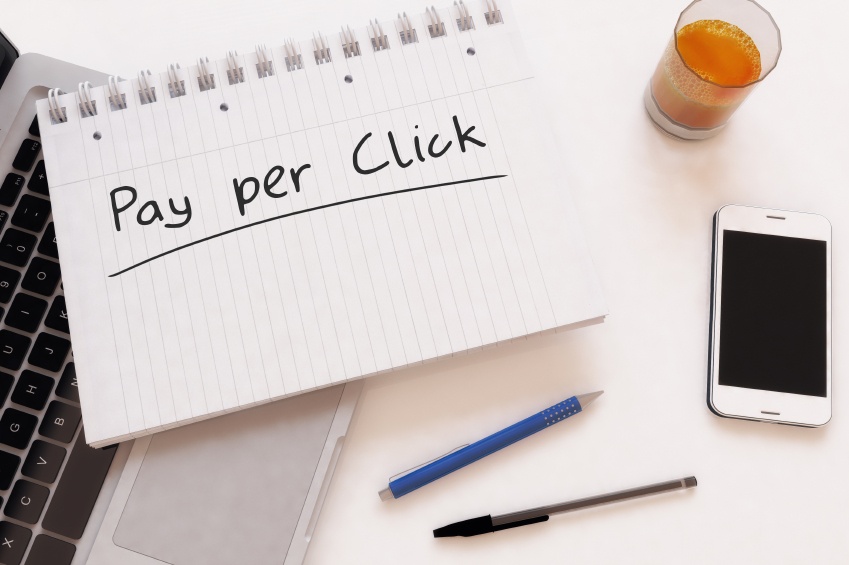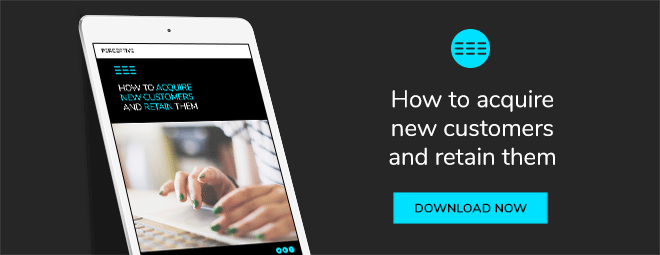
As the online marketplace continues to produce more vendor options, truly successful companies will differentiate themselves by providing superb customer experiences online.
Buyers are relying less on salespeople to provide them with information and more on your online content—in fact, as many as 67 per cent of the buyer's journey is now completed digitally.
People are heading to Google before they even consider buying: you need to make sure that your brand is present when they’re searching.
Good advice before starting out
Before you begin, you should have an estimate of your cost to acquire customers.
This is loosely defined as the cost of all of your sales and marketing expenses over a given period of time, divided by the number of customers acquired in that time frame.
This acquisition estimate will make it possible for you to calculate return on investment through the methodologies outlined here, and discover which channel is the most valuable for your business.
1) Google AdWords
Google AdWords is the collective term for the platform used to display adverts across a wide variety of formats. This includes:
- banner ads,
- adverts on YouTube,
- search ads on Google results pages,
- ads within mobile applications,
And so on.
These ads are targeted towards people who visit certain websites, are interested in certain topics, search for certain keywords, match certain audience demographics, to name a few. There are a lot of options available.
Businesses both large and small use AdWords to advertise their products or services—it can be as simple as bidding for a certain keyword, ensuring your advert is at the top of search results when certain terms are searched. It can also be complex and granular, displaying video adverts to very specific demographics.
The effectiveness of these campaigns varies, and there is a lot of flexibility in the programme. A good place to start would be in search ads, which you can learn more about here.
Alternatively, you can get the full rundown on Google AdWords at the dedicated AdWords Academy.
2) SEO
The sibling of AdWords is search engine optimisation or SEO. Where AdWords relies on you outbidding competitors to get your content in front of your audience, SEO relies on "organic search"—the regular search results that search engines display when something is searched.
In other words, it's about creating the most relevant content for the search intents your audience is looking for.
A first-place position on a search engine results page can be extraordinarily valuable. If you are the first result that someone sees when searching, for example, "Pine Bevel-Back Weatherboard Cladding", and this is one of your product, you are almost certainly going to get the attention you need—and a fair few sales to boot.
The problem is that the algorithm that search engines use are held very close to the chest. An entire industry has sprung up around trying to tick off these optimisation boxes, search engine experts using everything from graceful website code to selecting the right keywords for blogs as a way to get websites to the front page.
Good SEO can be confusing at best and enigmatic at worst—there's a reason there's a whole profession surrounding it. Ultimately, it comes down to one thing:
Giving your audience what they want.
Notice in the example above (Pine Bevel-Back Weatherboard Cladding) that the search term is very specific, this is what is referred to as a long-tailed keywords. Consumers today are well researched, so it pays to optimise for more specific searches. In addition to this, Google, is placing more emphasis on search intent which has resulted in the emergence of Pillar Pages.
If your site is fast, well-designed and offers something that people are looking for, your digital presence is already optimised. It may sound simple, but in reality, it can take a long time and a lot of work before you are competing with the giants in your industry.
But it's better to start now rather than get left behind.
3) Your website content
To generate more leads to your website, consider the following:
- Create valuable content that is entertaining, educational, and inspirational, created to nurture buyers throughout their customer lifecycle.
- Aim for two-way communication. As a marketer, you need to have your ear to the ground and listen and respond to buyers in a relevant, personalised way.
- Tie your paid advertising with traditional 'inbound marketing' methods (see below) to amplify and increase your reach.
Your landing pages, where you’re sending your online traffic (via ads and social posts), can be any page on your website and does not have to be limited to just your homepage.
These can be a sign-up page, a marketing page, or even a contact us page, and they do need to make an impact.
Every one of these "landing pages" is unique, but there are a few elements every effective landing page should have.
Checklist for an effective landing page:
- Uses a relevant, engaging image.
- Short, sharp, arresting headlines to grab attention.
- A strong value proposition that encourages visitors to take action.
- Social proof or a customer endorsement (case studies work well too).
4) Blogging
Blogging, once the realm of amateur writers, is now big business, and for one simple reason: it's effective at attracting visitors to your website. This is one of the core pillars of 'inbound marketing'.
Done well blogging can position you as a thought leader in your industry, using genuinely useful and educational content to attract and generate trust among customers. This, in turn, can improve your ranking in search engines, as your popular, authoritative content gives your website more weight in the eyes of the algorithm.
But perhaps most importantly, it can generate new customer leads. This is another core pillar of the inbound methodology. Blogs attract readers in, while a call-to-action at the bottom of said blog encourages the reader to download a piece of premium content, usually an ebook, that can give them more information about the topic they have shown interest in. Once provided, the customer is then entered into a nurturing relationship, where they are periodically emailed more information relevant to their interests, including more blog posts, special offers, more free ebooks, newsletter updates, and so on.
This content is designed to show your reader that you aren't just trying to sell them a product or service. You are trying to improve their lives in some way. Eventually, your readers will reward you with their trust, their loyalty, and a purchase of your product or service—perhaps after a chat with your sales team, of course.
Cut through the clutter
Your content must be good enough to break through the online clutter. Consider how many websites and social media channels compete for your customer’s attention every day. Yours simply cannot be average—the content must educate, inspire or entertain your audience.
An important pointer: Don’t talk about your brand constantly or try to sell people too early or too often. Try to spark interesting discussion with your content, as this will pay off with your visitors’ attention and engagement.
5) Social
Figure out what social channels your ideal audience spends the most time. Your goal with your social posts will be to drive traffic to your website in order to acquire new leads that turn into customers.
A few pointers for the most popular social channels:
- Facebook is a great way to generate traffic as it offers advertising sharing buttons on third-party sites and great engagement levels.
- On Twitter, you’ll need to determine what frequency is right for you in terms of promotional content mixed with valuable, non-promotional content (usually 1:5)—show off your products and/or services, but don't spam your audience.
- LinkedIn is great for B2B audiences and for building a credible social story. If you use their advertising well it can drive traffic. However, when it comes to B2C audiences it's main purpose is to raise brand awareness.
- Google+ remains a relatively small sector of the market, but it can still be a valuable channel if you can find the right circles to work through. It’s also a Google product, which leads many professionals to believe that being active on Google+ has some SEO merit.
- Needless to say, YouTube is all about video traffic. If you promote your link well in the video description and have engaging video content, it can be an effective channel. Given YouTube is also part of the Google network and that consumer demand for video content is growing, there are also SEO benefits.
Want to learn the industry secrets to customer acquisition and retention? Check out our eBook!
